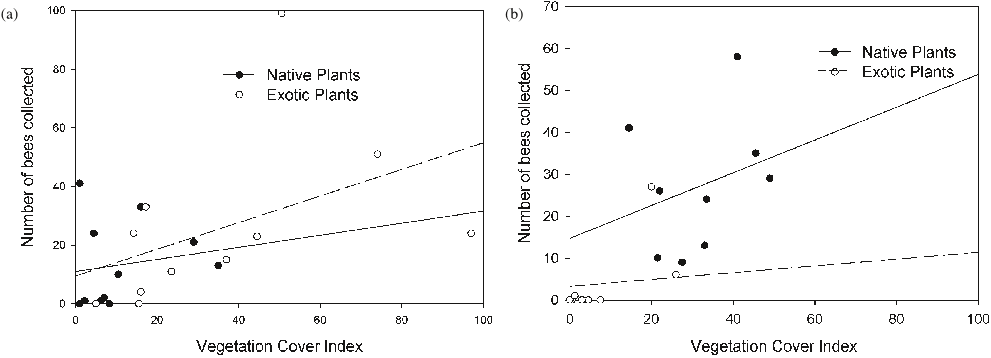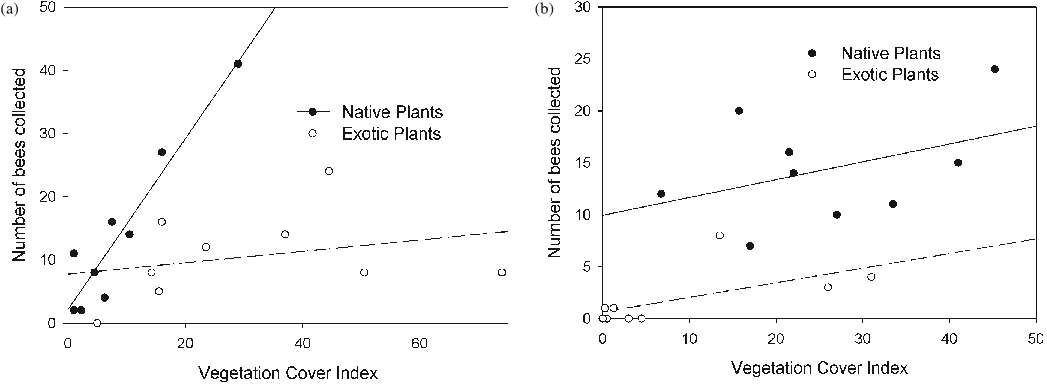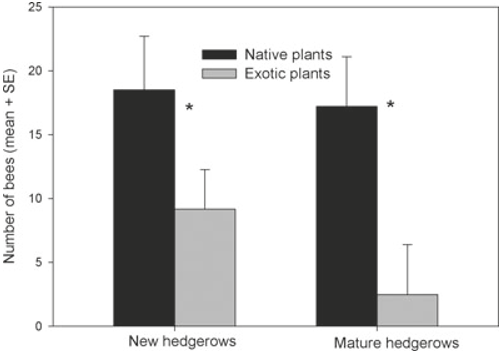




Did you find this useful? Give us your feedback










151 citations
138 citations
...…earlier findings that mature hedgerows (i.e., .10 years old) enhance abundances in adjacent fields, rather than dilute them through concentration (Morandin and Kremen 2013b) That these restorations could eventually even act as source populations into other parts of the landscape is an important…...
[...]
...Plantings may also create nesting habitat and function as refuges from pesticides and soil disturbances such as tilling (Morandin and Kremen 2013a, b)....
[...]
...…that included both the data collected in this study and additional data from sites where we collected flower visitors with identical methods (Morandin and Kremen 2013a, b; C. Kremen, unpublished data), we quantified each pollinator species’ level of floral resource specialization by…...
[...]
...…are at risk from pesticides (Brittain et al. 2010) and habitat loss (Kennedy et al. 2013), multiple studies have shown that increasing vegetative diversity locally boosts pollinator species richness and abundance (e.g., Kohler et al. 2008, Kennedy et al. 2013, Morandin and Kremen 2013a)....
[...]
90 citations
72 citations
66 citations
...The biodiversity supported by hedgerows influences the provision of pest regulation (Morandin et al., 2014) and pollination services (Morandin and Kremen, 2013b; Morandin et al., 2016), essential for agricultural productivity (Natural England, 2012)....
[...]
...An established shrub layer can provide important forage for Apoidea (bees) and other pollinator species (Hannon and Sisk, 2009), especially where the abundance and diversity of floral resources has been enhanced by management (Morandin and Kremen, 2013a)....
[...]
...For instance, pollinators were found to favour hedgerows with native species over introduced species in a California based study (Morandin and Kremen, 2013a)....
[...]
4,830 citations
4,041 citations
...For bee abundance on native and exotic plants, standardizing for floral cover of natives and exotics additionally gives a measure of “preference” (Johnson 1980)....
[...]
...Honey bees are eusocial and recruit foragers to rewarding patches (Winston 1987)....
[...]
1,963 citations
...Honey bees are eusocial and recruit foragers to rewarding patches (Winston 1987)....
[...]
1,741 citations
...If the interaction was significant, we kept the interaction term and report least squares mean difference and the region(s) of significance between native and exotic plants along values of the covariate, flower cover (Johnson & Neyman 1936; Milliken & Johnson 2002)....
[...]
1,620 citations
Seventy-five percent of the leading food crops and 35% of global food production is dependent on pollinators (Klein et al. 2007).
Because a quarter of native bee species that had greater than two individuals collected at these sites were found on only one native plant species, and each on a different native plantspecies, their data suggest that a diversity of native plants is essential to maintaining native bee diversity.
Of the native bee species that were represented by greater than two individuals (17 species), four bee species were found on only one species of native plant in this subset of samples.
The research was funded by an NSERC Postdoctoral Fellowship to L.A.M., a Conservation Innovation Grant, a National Science Foundation grant, and a National Geographic Society Research and6 Restoration EcologyExploration grant.
In light of the recent serious declines of honey bees and suspected role of poor nutrition in agricultural settings (vanEngelsdorp et al. 2009), creation of native plant hedgerows in intense agricultural areas may benefit honey bee colony health.
Recent studies suggest that habitats with greater bee diversity can result in greater or more stabilized crop production (Klein et al.
Composition varied among sites in native plants due to differences in service focus (pollination enhancement at new hedgerows, pest control at mature hedgerows), differencesin species choices made by the land owner, and differential survival among sites.
Bee Abundance, Richness, and DiversityOf the 23 species of native bees netted on flowers at the new hedgerow sites, 7 species were observed only on exotic plants and 7 species were observed only on native plants.
Native plants within these small, linear habitat elements are the most important resource for enhancing native bee abundance and diversity in degraded landscapes.
Honey bees in new hedgerow sites did not prefer native plants but rather used native and exotic plants in proportion to their abundance.
native plant hedgerows, by enhancing bee diversity over exotic weedy edges, may help to stabilize or enhance crop production.
In addition, these data indicate that hedgerows of mature native plants will attract or promote a more species rich and diverse community of native bees than field edges where exotic plants dominate, possibly aiding stability of pollination function.
Native bees preferred native plants over exotic plants at mature hedgerow sites at all cover amounts (F[1,13] = 39.08, p < 0.0001) (Fig. 3).
The authors found significantly more native bees on native plants than exotic plants (t[17] = −3.32, p = 0.004; Fig. 1) and p < 0.05 for all floral cover values greater than 15.